
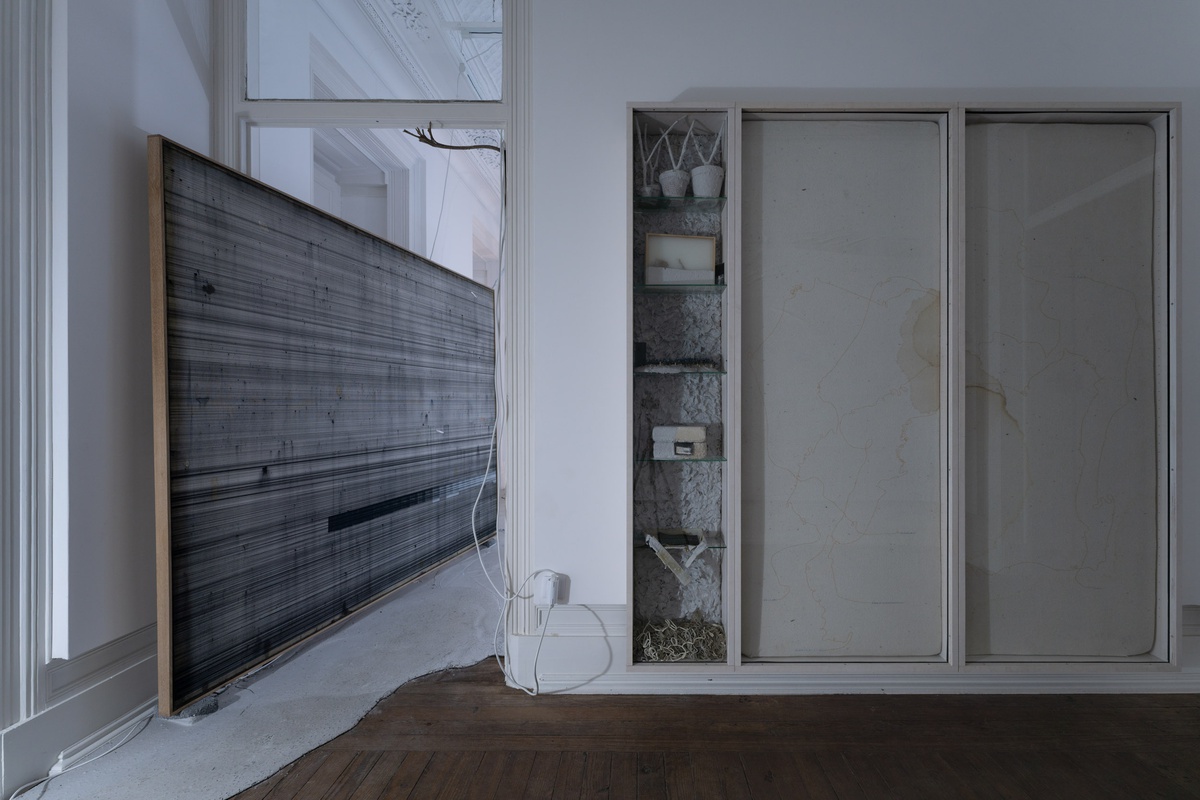
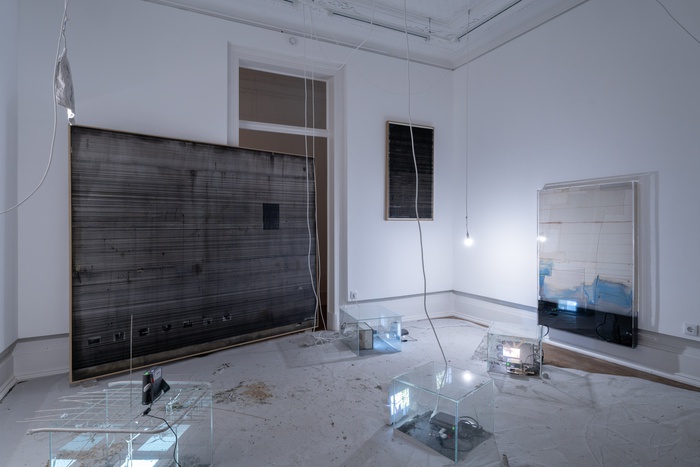
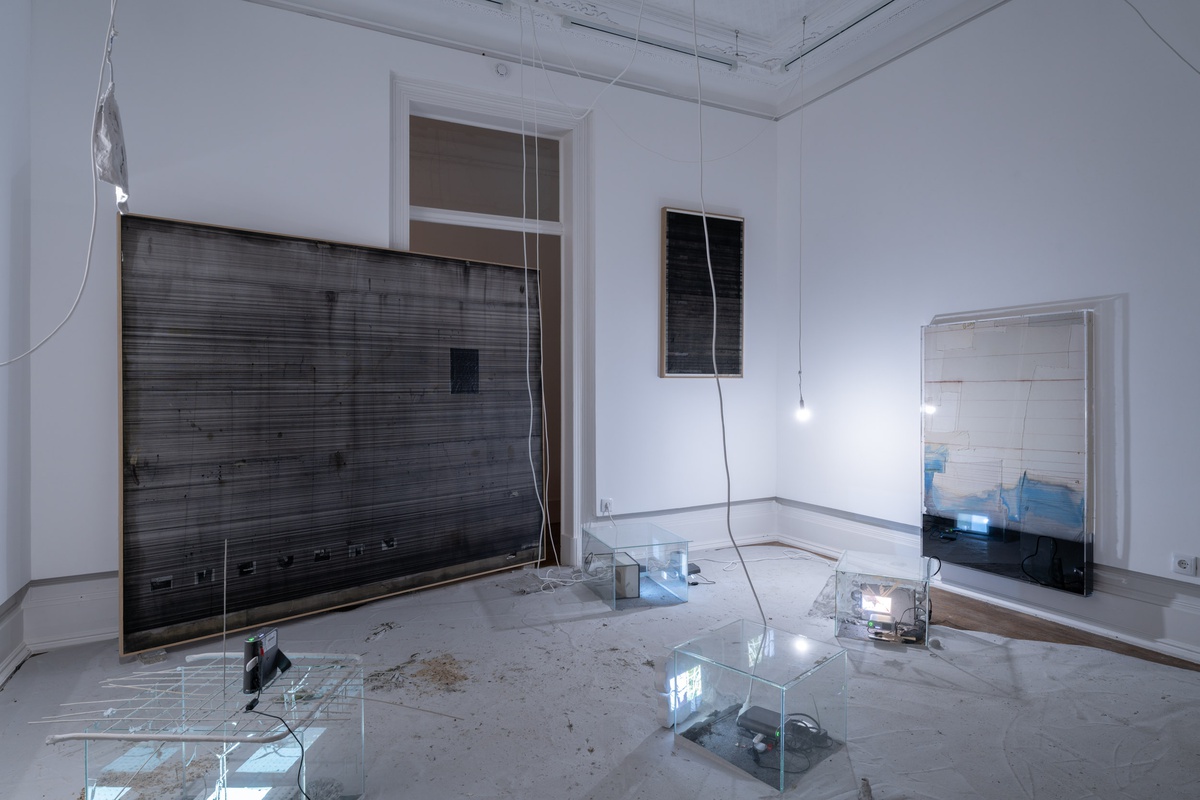

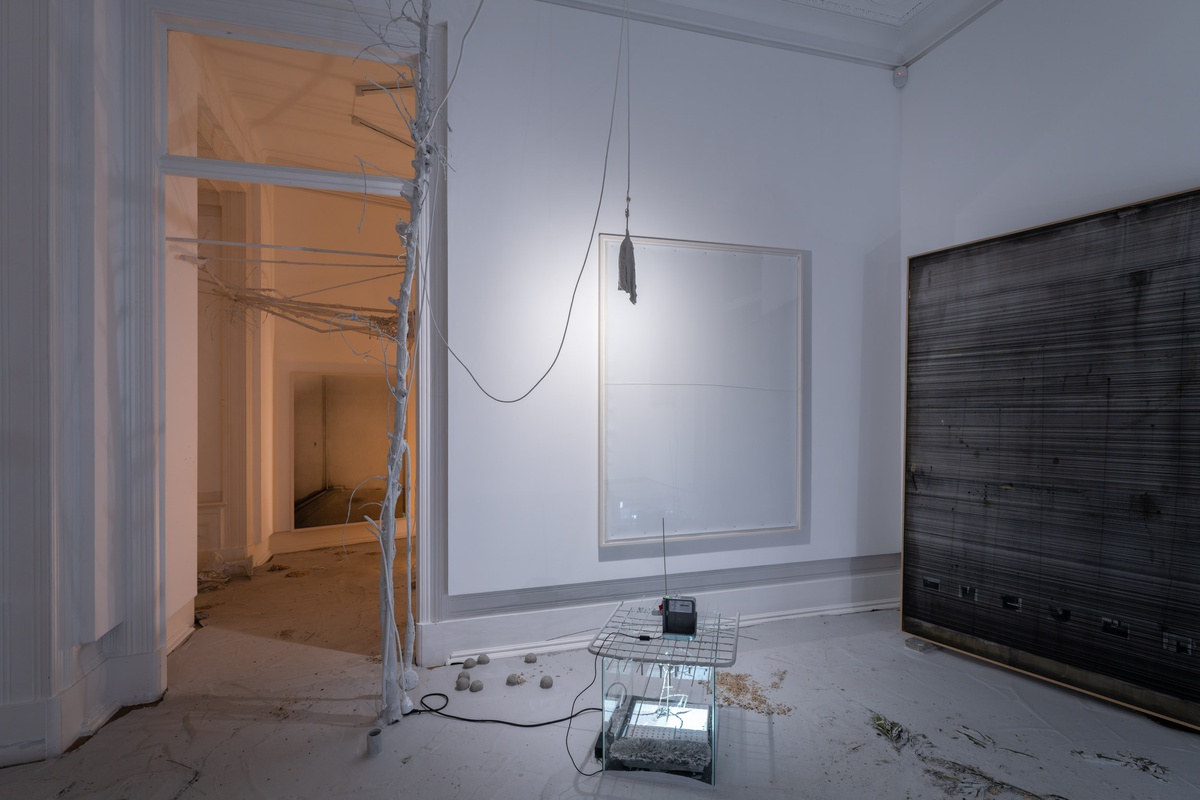
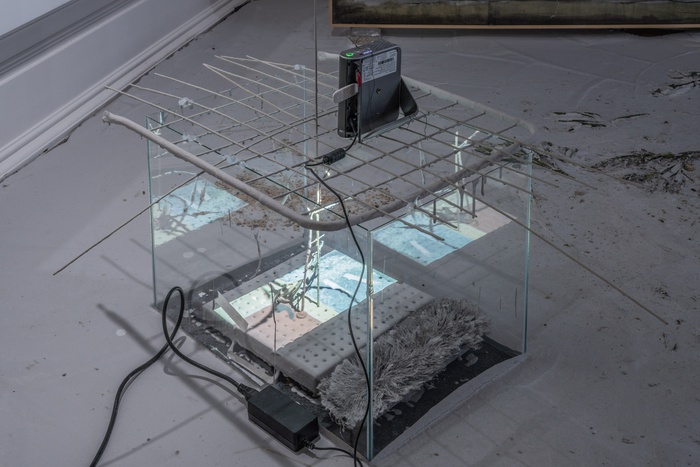
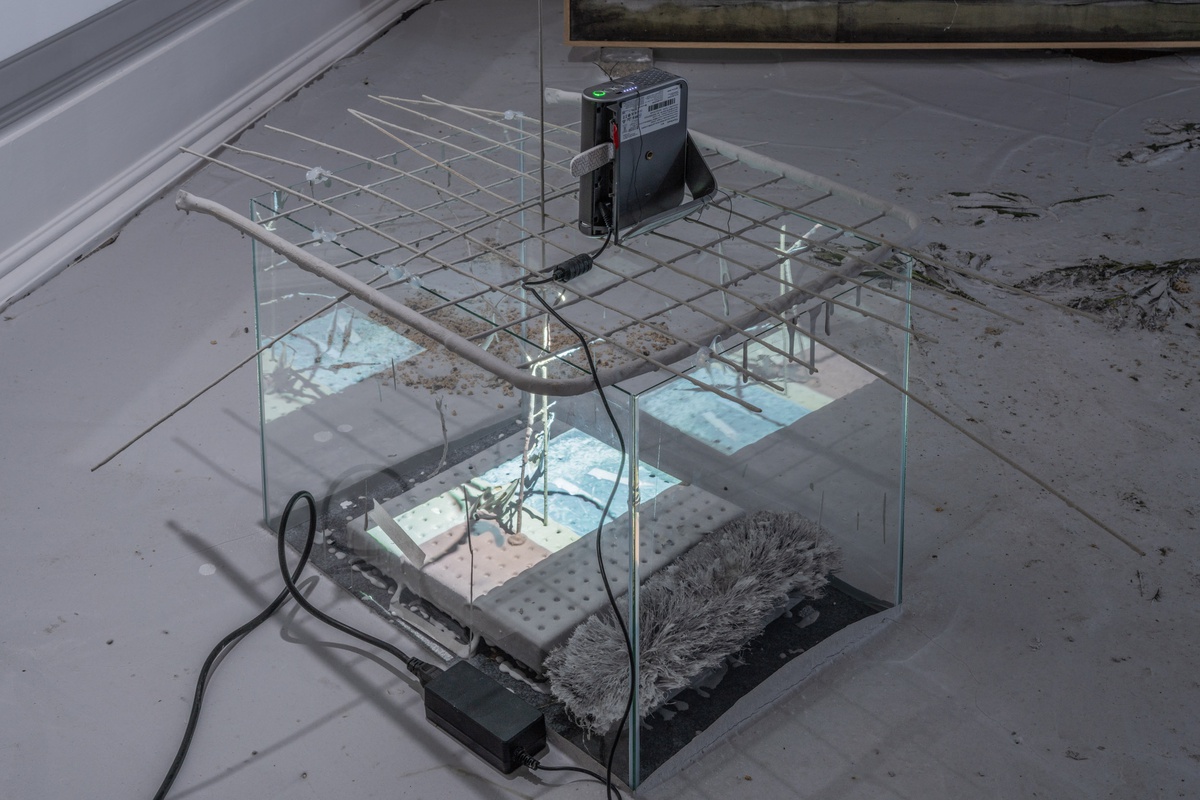
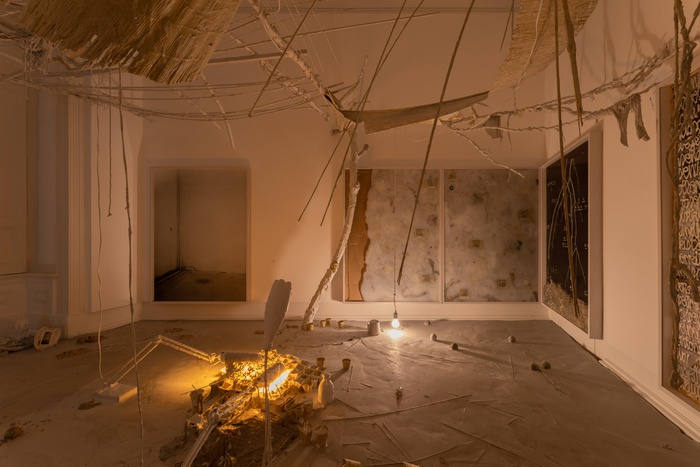
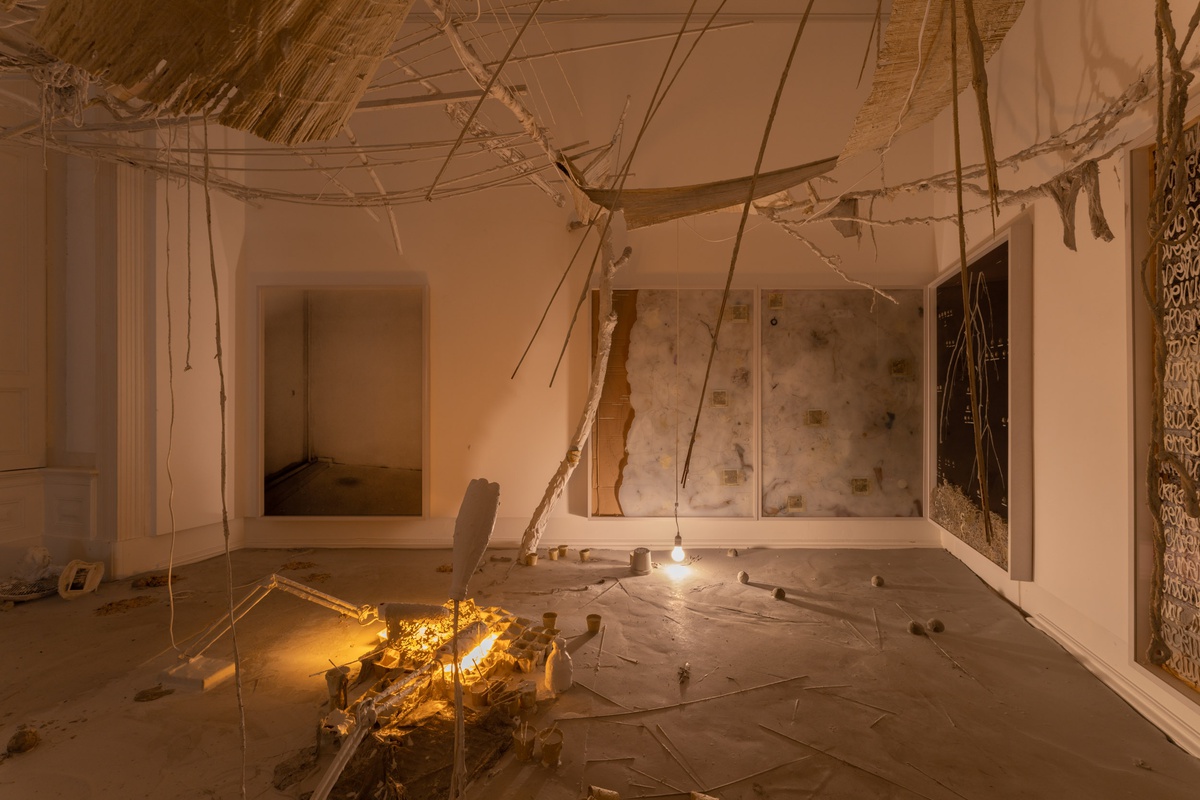
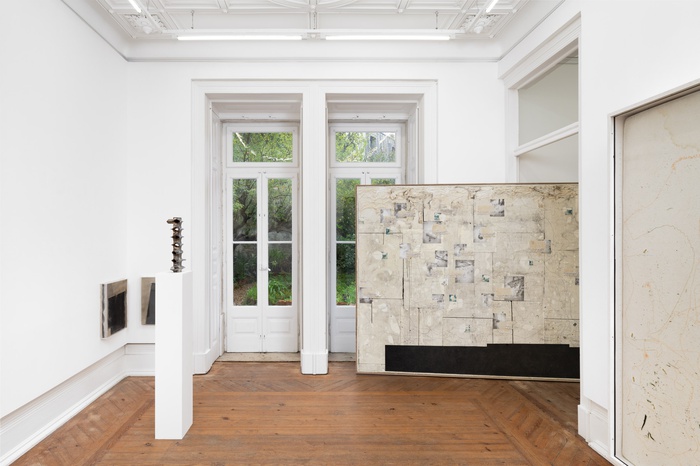
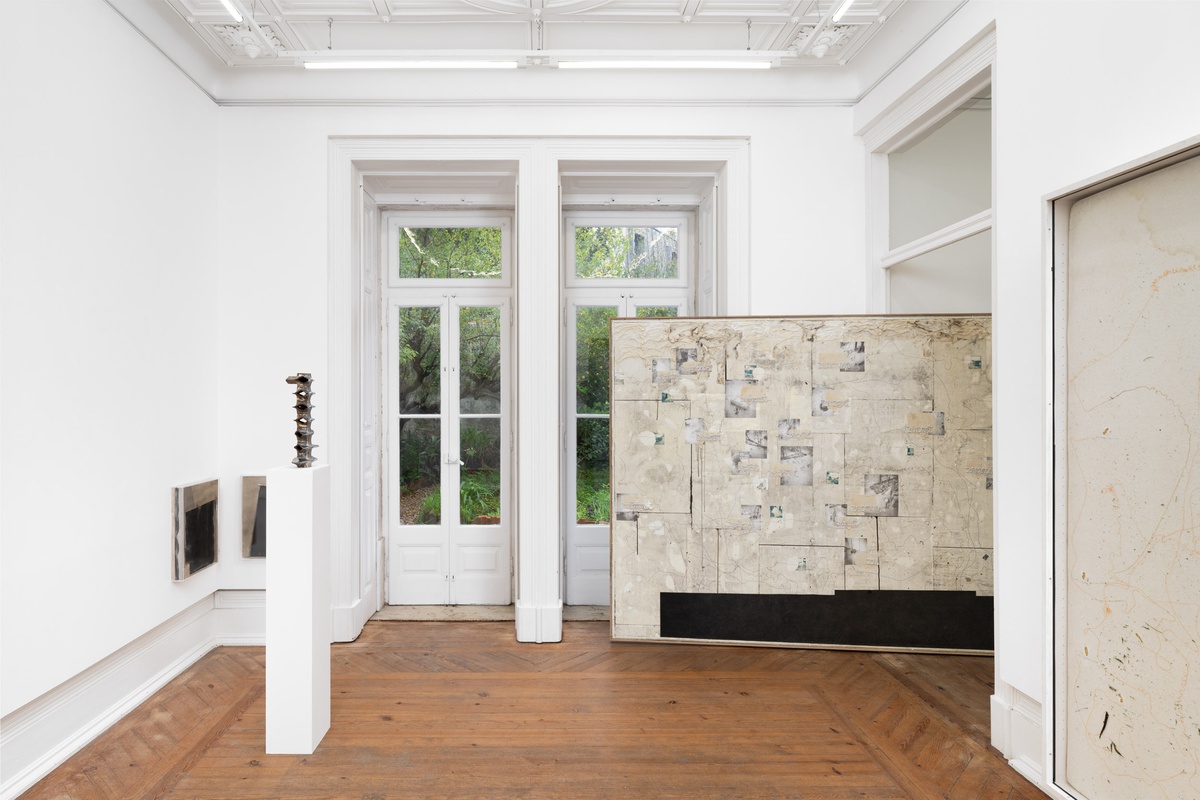
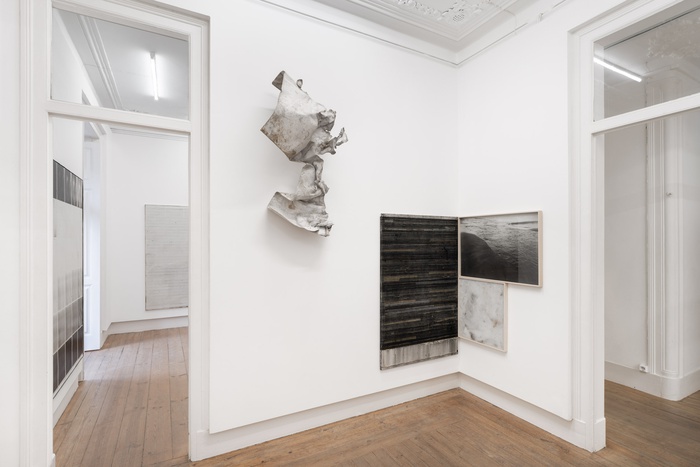
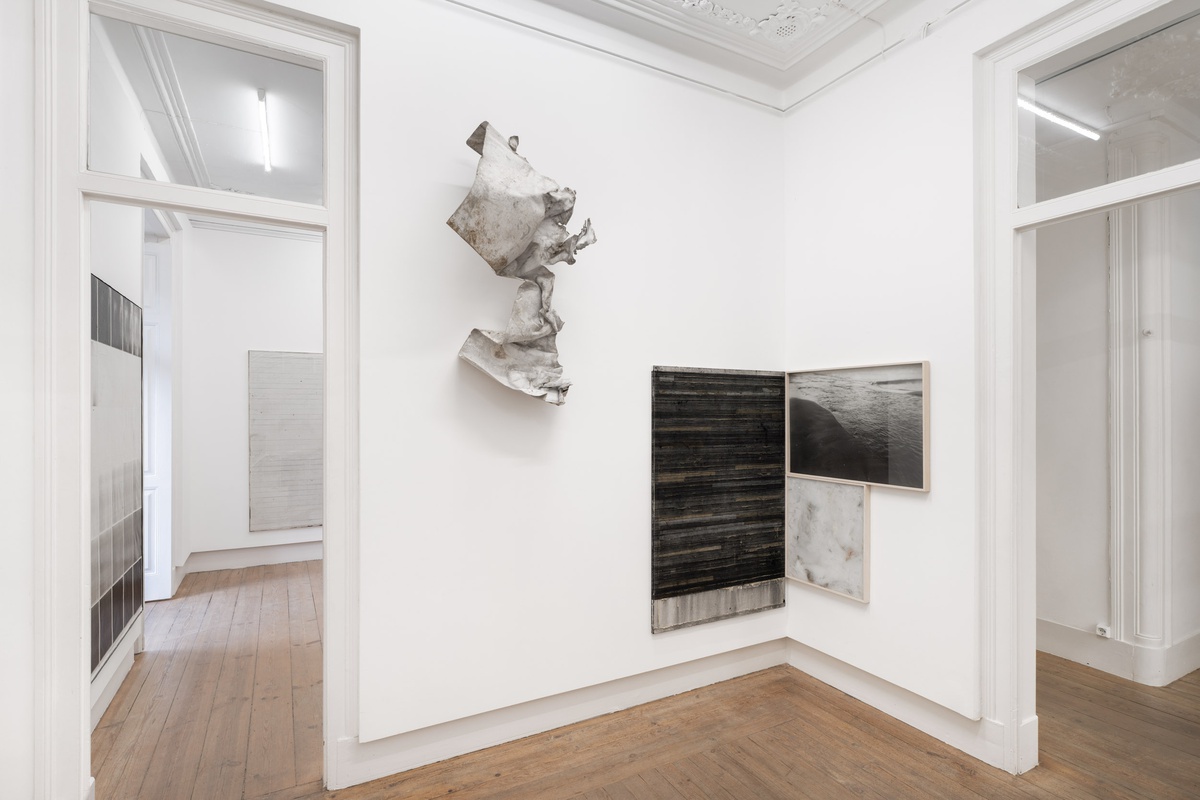

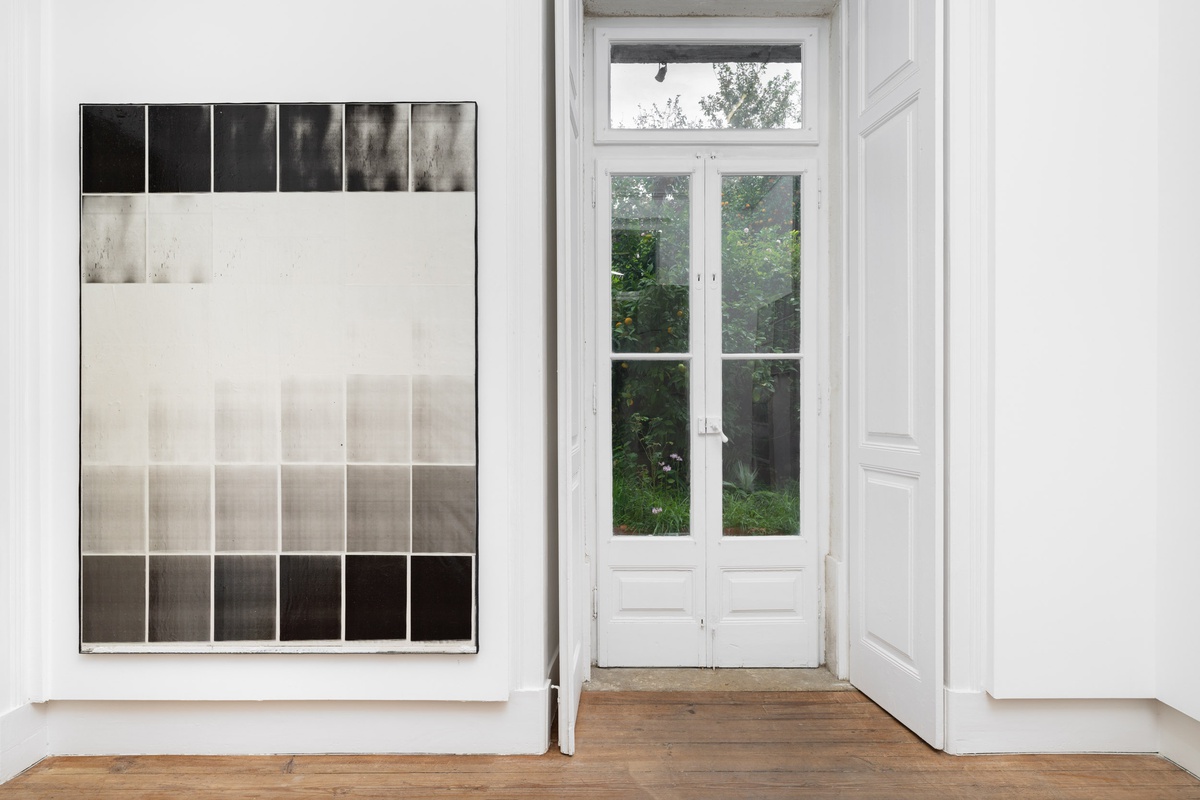
Installation view, Jahn und Jahn Lisboa, 2024
Installation view, Jahn und Jahn Lisboa, 2024
Installation view, Jahn und Jahn Lisboa, 2024
Installation view, Jahn und Jahn Lisboa, 2024
Installation view, Jahn und Jahn Lisboa, 2024
Installation view, Jahn und Jahn Lisboa, 2024
Installation view, Jahn und Jahn Lisboa, 2024
Installation view, Jahn und Jahn Lisboa, 2024
One can read CENAS, the title of Stefan Vogel’s first exhibition with Jahn und Jahn Lisbon as an anagram of the Italian word SCENA, the scene. As a whole and in its fragments – its rooms and works – the exhibition explores the theme of liminality. A spatial and temporal line in-between, the separating and yet connecting tissue. A scene is a situation and a setting at once. It entails time and space. It is intimate.
Essential to Stefan Vogel’s art practice is the production of spaces. His multimedia installations consume and produce space while the works, too, constantly implicate the process of their making and way of being – the artist producing them, the viewer placing them. A close intwining of work and life lies at the bottom of the artist’s methodology and practice, most palpable in the central function of his studio – the place he lives in and works at, his habitat, so to say. Within his space-filling installations, he utilizes and plays with our instinctive behavior to react to spaces’ functions, structures and references. Similar to the way of an anagram – transposing the letters of a word to change its meaning – he subtly flips around basic elements, with the eventuality of subverting our associative reading of material and immaterial spaces, our knowing of them, by which we navigate modern life. Through the use of various techniques, from painting, drawing, sculpture, writing, photography, and weaving, as well a wide array of media, from construction materials, organic matter, everyday objects, furniture, and fabrics, he creates so called “growing aids” (“Gewuchshilfen” in German). They are structures for a language that, so the artist’s hope, is undefined enough to form art as hope itself. The vocabulary for this becoming language literally and metaphorically speaks through the works themselves; works that become space; space that becomes situation – holding at their threshold yet again the promise of a language.
Entering the gallery, the three dimly lit rooms on our left embody one dense landscape, one interweaved organism. A wasteland. Being the contradiction of any functional space, a wasteland is a space in the midst of its own story, inscribed with histories from before, open to an undefined future. Neglected and full of potential at once. There’s always two sides to a story. Running on a split screen in video tote winkel wandem (2024), two pair of feet walk beside each other - each leaving behind traces, each writing their own story, each from their own perspective. Together and separated. Doppelab (2024) shows us the photograph of a wasteland, framed and divided in standardized dimensions of an IKEA Billy shelf – the course of history opposed in regulation and mass production. And yet, it’s just a shelf with preserving jars. Or is it that through preserving what we produce – that shift from the immediacy of today to a preservation of today for tomorrow – that we created a vicious circle, the agony of modern life and labor?
Over time, a scenery of ink grows in aus – wachsen (2024) and Ideale ziehen lassen (2024). The substrate on which the landscape comes into being consists of shreds of punk band t-shirts that the artist stitched together newly. Ink, filled into the box as the last step, will rise through the layers of fabric in the course of the exhibition, slowly growing into what the artist calls “Haltungslandschaft” – a neologism – beautifully descriptive in German – and maybe most closely captured in English by a scenery of beliefs. Placed throughout the installation, we further encounter glass boxes that the artist calls aquariums. Subtly shedding light, they showcase “vocabularies”, films of polaroids in various stages of development – oscillating between abstract blur and eventual sharp image. Whereas the gallery’s parquet floors and high ceilings are exposed in the first room, concrete coated floor guide our movement through the second room into the third room, where the floor is fully covered and branches, forming a roof, force us to walk slightly bent over. Form has become space. The gallery has become landscape.
Here, hung over the corner unfolds Tradik (2024), a triptych showing cartographies of plastic waste, mounted on cardboard, coated in silicon, and a photograph of an inverted potted plant. The latter appears as a rhizome-like root system with labeled crown corks, making it a family tree of “Irrungen und Wirrungen” – the trials and tribulations – of our human existence. To the triptych’s left, we find the original scene, a potted plant, shot in black and white, alone in the corner of a room – a human being, rooted in its habitat, forever limited by its edges. A desolate scene. Complemented by a third photograph of the imprint of the plant pot on the floor. A shadow, a stain – what do we leave behind? In letters like frosting on a cake, the artist muses on life’s circumstantial tragedies, on themes of neglect, potential, and legacy.
Like T.S. Eliot, who, in his multifaceted poem The Waste Land (1922), was searching for a source of faith and spirituality amidst the void and singularization of human existence in modern times, Stefan Vogel maps the manifold perspectives of life, looking for cross pollinations in between a multitude encounters, moments, and memories. Like wasteland, like life – it remains ambiguous.
What are the roots that clutch, what branches grow
Out of this stony rubbish? Son of man,
You cannot say, or guess, for you know only
A heap of broken images, where the sun beats,
And the dead tree gives no shelter, the cricket no relief,
And the dry stone no sound of water. Only
There is shadow under this red rock,
(Come in under the shadow of this red rock),
And I will show you something different from either
Your shadow at morning striding behind you
Or your shadow at evening rising to meet you
T.S. Eliot, The Waste Land, 1922
Text by Marie-Therese Bruglacher
Stefan Vogel, born 1981 in Fürth, currently lives in Leipzig. 2004–2012 University of Fine Arts, Hamburg; 2016 Villa Romana Prize, Florence; 2022 Fellowship of the German Academy in Rome, Villa Massimo. Selected solo shows: 2024 Jahn und Jahn, Lisbon; 2024 Kunstmuseum Stuttgart; 2024 Kunstverein Gera; 2024 Galerie Michael Haas, Berlin; 2023 OFF1C1NA Project Space, Rome; 2023 Schönewald, Düsseldorf; 2022 Villa Massimo, Rome; 2022 Tichy Ocean Foundation, Zurich; 2021 Kunstsammlungen Chemnitz; 2021 Overbeck-Gesellschaft, Kunstverein Lübeck; 2021 Jahn und Jahn, Munich; 2019 Schönewald, Düsseldorf; 2018 Lippische Gesellschaft für Kunst, Detmold; 2018 Vi, Vii, Oslo; 2017 Jahn und Jahn, Munich; 2015 Feinkunst Krüger, Hamburg. Selected group shows: 2024 Kunstsammlungen Chemnitz; 2023 Museum Pfalzgalerie, Kaiserslautern; 2023, 2022 & 2019 G2 Kunsthalle Leipzig; 2022 Bundeskunsthalle Bonn; 2022 Kunstmuseum Stuttgart; 2020 Kunsthalle Bremen; 2020 Deichtorhallen, Hamburg; 2019 Kunstmuseum, Bonn; 2019 Museum Gunzenhauser, Kunstsammlungen Chemnitz; 2019 Kunstverein Schwerin; 2019 Archiv Massiv, Leipzig; 2018 Museum Corvey, Höxter; 2018 Terzopiano, Lucca; 2017 Festspielhaus Hellerau; 2017 Kunstraum München, Munich; 2017 Kunstverein Hamburg.
Institutional and major collections which hold works by the artist include Kunstmuseum Bonn; Kunstsammlungen Chemnitz; Bundeskunstsammlung; Museum Kunstpalast, Düsseldorf; G2 Kunsthalle, Leipzig; Langen Foundation, Neuss; Kunstmuseum Stuttgart; The LBBW Collection, Stuttgart; Philara Collection, Düsseldorf; Tichy Art Foundation, Zurich.

Dossier_Stefan_Vogel.pdf (1.0 MB)